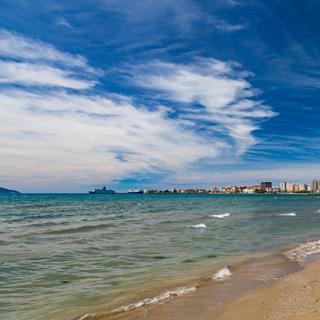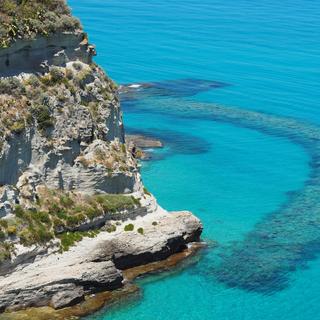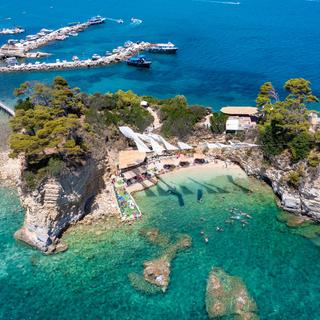
Kefalonia weather and climate in 2025

Kefalonia weather and climate in 2025
Day
31 °C
Night
20 °C
Sea
25 °C
Precipitation
10 mm
in month
Rainy days
1 days
in month
Daylight
14 hours
average
Sunshine
11 hours
average
Humidity
60 %
Weather charts for Kefalonia
Destinations nearby and activities
Destinations nearby
Activities in Kefalonia

Find more destinations like this
Destinations with similar weather to Kefalonia
Other destinations in Greece - West coast
Closest cities for Kefalonia
Last week's weather in Kefalonia
Average daily temperature during the week of 7 July 2025 - 13 July 2025 was 30 °C (86 °F), average minimal (night) temperature was 23 °C (73 °F). Both the daily and night temperatures in Kefalonia Island are roughly same as the long-term average, which is around 31 °C (88 °F) and 20 °C� (68 °F) respectively. In the end, Sunday was hottest day of the week. The average temperatures during different times of day (local time) were following: 7am 24 °C (75 °F), 10am 26 °C (79 °F), 1pm 29 °C (84 °F), 4pm 30 °C (86 °F), 7pm 29 °C (84 °F), 10pm 26 °C (79 °F).
There were 7 days without rain during this week. During the whole week, total of 0 mm (0.00 in) of precipitation was observed, which is slightly below the long term average for Kefalonia Island, which is 2 mm (0.08 in). During the daytime (from dawn to dusk), there was 2 % cloud coverage on average.
Average speed of wind was 4.5 m/s. North-West was the dominant wind direction(s). The air pressure varied between 1008 hpa and 1018 hpa. On average, the air humidity in Kefalonia Island was 59 %.
During the daytime (from dawn to dusk), there were in average: 15 hours clear skies and 1 hour partially overcast skies. The sunrise on average occurred at 06:22, and the sunset occurred at 21:02.
Weather overview for Kefalonia
Weather overview
Kefalonia, a picturesque island located in Greece, is known for its warm Mediterranean climate. The island experiences a wide range of temperature fluctuations throughout the year, such as daytime temperatures varying from 13 °C (55 °F) in the colder month of January to a peak of 31 °C (88 °F) during the sweltering heat of August. While the sea temperatures reach their zenith in August at 25 °C (78 °F), the mercury dips to its nadir in February with a cool 15 °C (59 °F). Nighttime temperatures also see a significant transition from as low as 6 °C (42 °F) in February to a comfortable 20 °C (69 °F) in August. The island sees its driest period in July, with barely 1 day of rainfall; conversely, December is characterized by the most precipitation, with a substantial 12 days of rain.
January weather
In January, Kefalonia witnesses a decline in daytime temperatures, reaching a low of 13 °C (55 °F), while the sea temperature also begins its downward trend, registering at 16 °C (60 °F). The frequency of rainy days starts to decrease, alongside a noticeable dip in rainfall volume, recorded at 110 mm (4.32 in). There is an upswing in the number of clear-sky sunny hours, amounting to 5 hours, and the night temperature steadily decreases to 6 °C (43 °F).
February weather
February marks the period when Kefalonia experiences the lowest sea temperatures, at 15 °C (59 °F), and the nighttime temperature also reaches its minimum at 6 °C (42 °F). A decline in the amount of rainfall can be observed, setting at 97 mm (3.80 in). The duration of sunny hours sees an incremental increase, totaling 5 hours, while the month also witnesses the peak wind speed.
March weather
The number of rainy days in Kefalonia starts to decline in March, quantified at 9 days. Concurrently, we notice a decrease in rainfall volume to 73 mm (2.88 in). The temperatures during the day begin their ascension phase, documented at 15 °C (60 °F), and the nighttime temperatures follow suit, increasing to 8 °C (46 °F). The uplift in sunny hours continues, now registering 6 hours.
April weather
April in Kefalonia is characterized by a discernible rise in daytime temperatures, up to 19 °C (66 °F), and the commencement of an increase in sea temperatures, noted at 16 °C (61 °F). The downward trend of rainy days persists, documented at 6 days, and the rainfall volume further decreases to 51 mm (2.02 in). The enhancement of nighttime temperatures to 10 °C (50 °F) and the continued rise in sunny hours are also observed.
May weather
May greets Kefalonia with daytime temperatures comparable to the previous month, marked at 24 °C (75 °F), and the progression of sea temperature warming, now at 19 °C (66 °F). The reduction in the number of rainy days is notable, logged at 4 days, alongside a continued decline in rainfall, reaching 24 mm (0.93 in). The night periods show a consistent temperature rise, now at 14 °C (57 °F), and the onset of the dry season is felt.
June weather
June's weather pattern reflects a steady increase in the daytime temperature, which stands at 28 °C (82 °F), while the sea temperature further ascends to 22 °C (72 °F). The month marks the commencement of the tourist season with reduced rainfall, both in terms of days (2 days) and volume (13 mm (0.51 in)), and a rise in nighttime temperatures.
July weather
The peak of the tourist season in July aligns with the continued elevation of daytime temperatures to 31 °C (88 °F), and the sea temperature reaching further heights at 24 °C (75 °F). The absolute minimum in the number of rainy days is noted, evidenced at 1 day, and the zenith of sunny hours is achieved along with the peak in clear, cloudless skies.
August weather
August in Kefalonia marks the climax of both the tourist and dry seasons. The sea temperature hits an annual high, alongside the daytime temperature reaching its maximum of 31 °C (88 °F). Furthermore, the month features the warmest nights at 20 °C (69 °F). The sunny hours slightly recede from their maximum in the preceding month.
September weather
The shift towards cooler days in September is palpable, with daytime temperatures starting to decrease to 27 °C (81 °F). The sea temperature also begins its decline, noted at 24 °C (76 °F). An upward trend in the number of rainy days is detected, alongside the initial rise in rainfall volume to 51 mm (1.99 in), marking the end of dry season patterns. The night temperature starts to reduce, settling at 18 °C (64 °F).
October weather
October observes a continuation in the descent of sea temperatures to 22 °C (72 °F) and a similar trend in daytime temperatures. The frequency of rainy days increases, quantified at 7 days, and so does the rainfall volume. The downward trajectory of the nighttime temperature also continues. The decrease in sunny hours becomes more evident, logging 7 hours.
November weather
November sees a further drop in daytime temperatures to 17 °C (63 °F), paralleled by the sea temperatures also on the decline, marked at 20 °C (68 °F). The increasing number of rainy days coincides with the peak rainfall of the year, signaling the wettest period in Kefalonia. The night temperature decrement persists, and the dwindling solar hours reach a notable point.
December weather
December's drop in daytime temperatures is noticeable in Kefalonia, as is the diminishing of sea temperatures. The peak in the number of rainy days, reaching 12 days, denotes the highest level of precipitation. The decline in nighttime temperatures continues, registering at 8 °C (46 °F). The shortest sunny hours and day lengths are recorded during this month.
FAQs
How many hours of sunlight can be typically enjoyed during January?
January in Kefalonia brings about an average of 5 hours of sunshine, letting you bask in the sun for a reasonable part of the day.
Is February quite windy in Kefalonia?
Yes, wind speeds tend to reach their highest in February, creating the breeziest conditions of the year.
Does the daytime temperature in March signify the onset of warmer weather?
Indeed, with the daytime temperature ascending to 15 °C (60 °F), March indicates the beginning of warmer days ahead.
What might one expect regarding the nighttime temperatures in April?
As April unfolds, the nighttime temperatures in Kefalonia improve to a mild 10 °C (50 °F).
What's the likelihood of experiencing rain in May?
May is typically a dry month in Kefalonia, with a low probability of rain over approximately 4 days.
Will I need an umbrella during my June holiday in Kefalonia?
Carrying an umbrella for June in Kefalonia is largely unnecessary, as rain is infrequent and limited to a mere 2 days.
Is the sea temperature in July conducive to swimming?
July's inviting sea temperature of 24 °C (75 °F) provides perfect conditions for swimming and enjoying water activities.
How does the warmest month of the year, August, affect nighttime activities?
August's balmy evenings with temperatures around 20 °C (69 °F) offer a comfortable setting for nighttime events and socializing outdoors.
Does September signal the return of the rain in Kefalonia?
September in Kefalonia introduces a gradual resurgence of rain, although it still remains largely dry with only 4 days expected to be wet.
What are the chances of encountering rain in October?
Rain becomes more typical in October, with an anticipated 7 days of precipitation.
How do nighttime temperatures in November affect evening outings?
Evening outings in November come with cooler conditions, as temperatures tend to fall to about 11 °C (52 °F), suggesting a need for warmer attire.
Are the shorter days and decreased sunlight significant in December?
Yes, December is marked by the shortest days and minimal sunlight, reflecting the winter season's influence.











